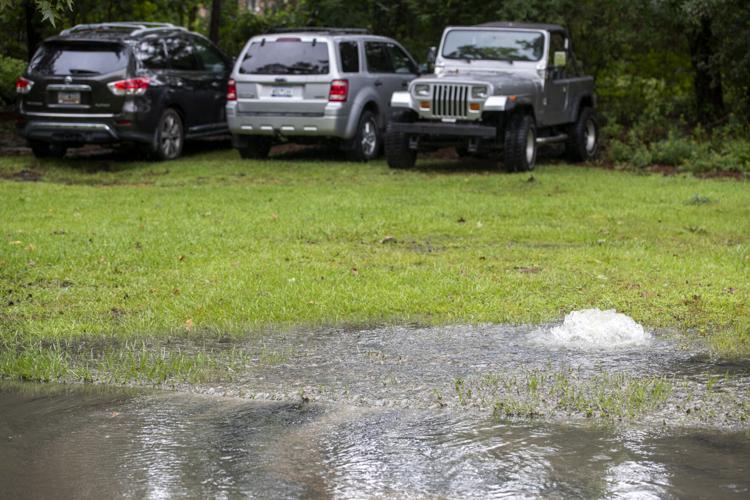Charleston, South Carolina—a picturesque jewel of the Lowcountry—has long captivated visitors and residents with its historic architecture, vibrant culture, and breathtaking coastal views. However, beneath this idyllic image lies an inconvenient and, at times, unpleasant reality: water quality concerns that have persisted for years and continue to plague the region. Now, a recent Supreme Court decision threatens to compound Charleston’s water challenges, raising alarms about the future health and sustainability of its waterways.
As Charleston battles rising pollution, stormwater runoff, and an aging infrastructure ill-equipped for modern needs, experts warn that the high court’s narrowing of federal environmental regulations could undermine efforts to improve water quality. To fully appreciate the stakes, it’s crucial to understand the current state of Charleston’s water systems, the effects of the ruling, and what this means for the community’s future.
The Supreme Court Ruling: A New Challenge Emerges
Against this backdrop of water-related difficulties, the U.S. Supreme Court delivered a ruling in March 2025 that could have profound implications for Charleston and similar communities. In a case involving the application of the Clean Water Act, the court decided to limit the Environmental Protection Agency’s (EPA) authority to enforce broad water quality standards. Specifically, the ruling bars the EPA from holding permit holders responsible for the overall quality of water bodies affected by their discharges. Instead, the agency must focus narrowly on specifying compliance steps for individual permits.
While the decision was welcomed by some industries and municipalities seeking more predictable regulations, environmental advocates have sounded the alarm. They argue that the ruling undermines the EPA’s ability to address cumulative pollution in shared waterways—a critical issue in regions like Charleston, where water quality is shaped by the combined impacts of multiple sources, including stormwater, agricultural runoff, and wastewater treatment facilities.
For Charleston, the ruling raises the possibility of weakened oversight for wastewater plants and other entities that discharge into local waterways. Without strong federal enforcement mechanisms, efforts to reduce pollution could become more fragmented and less effective. Critics warn that this could lead to higher levels of contamination, further straining the region’s already vulnerable water infrastructure.
The Local Impact: What’s at Stake?
Charleston’s dependence on clean and functional waterways cannot be overstated. From fishing and tourism to recreational activities like kayaking and paddleboarding, the city’s economy and quality of life are deeply tied to its water resources. Yet, the challenges posed by pollution and aging infrastructure risk undermining these vital connections.
The Supreme Court’s decision could exacerbate existing problems in several ways. First, it places greater responsibility on individual permit holders to manage their discharges, potentially reducing the overall effectiveness of coordinated regional approaches to water quality. Second, the decision may embolden polluters to cut corners, knowing that the EPA’s ability to enforce broad outcomes has been curtailed. Finally, the ruling complicates long-term planning efforts by introducing greater regulatory uncertainty at a time when Charleston needs proactive solutions.
Charting a Path Forward: Solutions and Advocacy
Despite the obstacles posed by the Supreme Court ruling, there are steps Charleston can take to address its water quality challenges and protect its treasured waterways. Key areas of focus include:
1. Infrastructure Upgrades
Investing in modernizing Charleston’s aging sewer and stormwater systems is essential. Upgrades to prevent combined sewer overflows, expand stormwater storage, and separate wastewater from storm runoff could significantly reduce pollution incidents.
2. Green Infrastructure
Sustainable solutions like rain gardens, permeable pavements, and wetlands restoration can help manage stormwater runoff more effectively. Green infrastructure also provides co-benefits such as improved urban aesthetics and enhanced wildlife habitats.
3. Community Engagement
Raising awareness among residents about water conservation, pollution prevention, and sustainable practices is crucial. Programs that encourage responsible landscaping, waste disposal, and water use can make a meaningful difference.
4. Policy Advocacy
At the state and local levels, Charleston can advocate for stronger water protections to fill the gaps created by the Supreme Court ruling. Collaborative efforts with environmental organizations, businesses, and neighboring municipalities may offer innovative solutions.
5. Climate Resilience
Given Charleston’s vulnerability to sea-level rise and extreme weather, integrating water quality measures into broader climate adaptation strategies is vital. Building resilient infrastructure and reducing emissions can help mitigate future risks.
The Road Ahead
Charleston’s waterways are at a crossroads. The Supreme Court’s decision has added complexity to an already challenging situation, but it also underscores the need for local action and innovation. By embracing bold solutions and fostering a sense of shared responsibility, Charleston has an opportunity to secure the future of its water resources and ensure that they remain a source of life, beauty, and pride for generations to come.
The city’s history is steeped in its relationship with water. From the bustling activity of its ports to the tranquil beauty of its marshes, water has been both a lifeline and a defining feature of Charleston’s identity. As the community navigates the challenges ahead, the commitment to preserving and enhancing this invaluable resource must remain as steadfast as the tides themselves.













